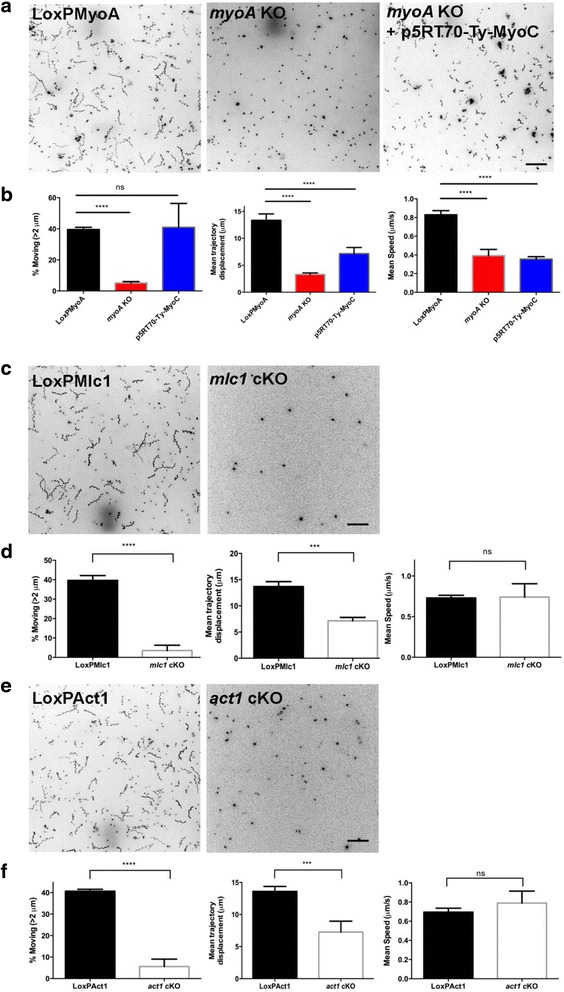Fig. 8.

3D motility of the myoA knockout (KO), mlc1 conditional knockout (cKO) and act1 cKO parasites. a Maximum intensity projections (MIPs) for parental (LoxPMyoA), myoA KO and p5RT70-Ty-MyoC-expressing myoA KO parasites. b The percentage of total parasites moving (left panel), mean trajectory displacement (middle panel) and mean instantaneous speed (right panel) were significantly reduced for the myoA KO parasites (red). Of these motility parameters, p5RT70-Ty-MyoC (blue) restored the percentage of moving parasites back to wildtype levels (black), and partially restored the mean trajectory displacement, but was unable to complement the decrease in mean instantaneous speed. c MIPs for parental (LoxPMLC1) and mlc1 cKO parasites. d The percentage of total parasites moving (left panel) and mean trajectory displacement (middle panel) were significantly reduced for the mlc1 cKO parasites (red) but the mean instantaneous speed remained unaffected. e MIPs for parental (LoxPAct1) and act1 cKO parasites. f The percentage of total parasites moving (left panel) and mean trajectory displacement (middle panel) were significantly reduced for the act1 cKO parasites (red), but the mean instantaneous speed remained unaffected. Data shown are the results of three independent experiments (four for mlc1 cKO), with each experiment performed in triplicate except for the induced KO samples (mlc1 cKO and act1 cKO), for which six technical replicates were performed per biological replicate due to low numbers of moving parasites. Datasets were compared by two-way ANOVA with Sidak’s multiple comparisons test. Error bars = SEM. The total number of parasites analysed was 2795 for LoxPMyoA, 3825 for myoA KO, 2910 for myoA KO + p5RT70-Ty-MyoC, 2443 for LoxPMlc1, 239 for mlc1 cKO, 2435 for LoxPAct1, and 1037 for act1 cKO. A 2-μm trajectory displacement cut-off was applied to exclude stationary parasites from calculations for mean trajectory speed and displacement (see Methods). Scale bar; 50 μm. *** P < 0.001, **** P < 0.0001, ns = not significant. The colour scheme for all MIPs was inverted for better visualisation of parasite trajectories
